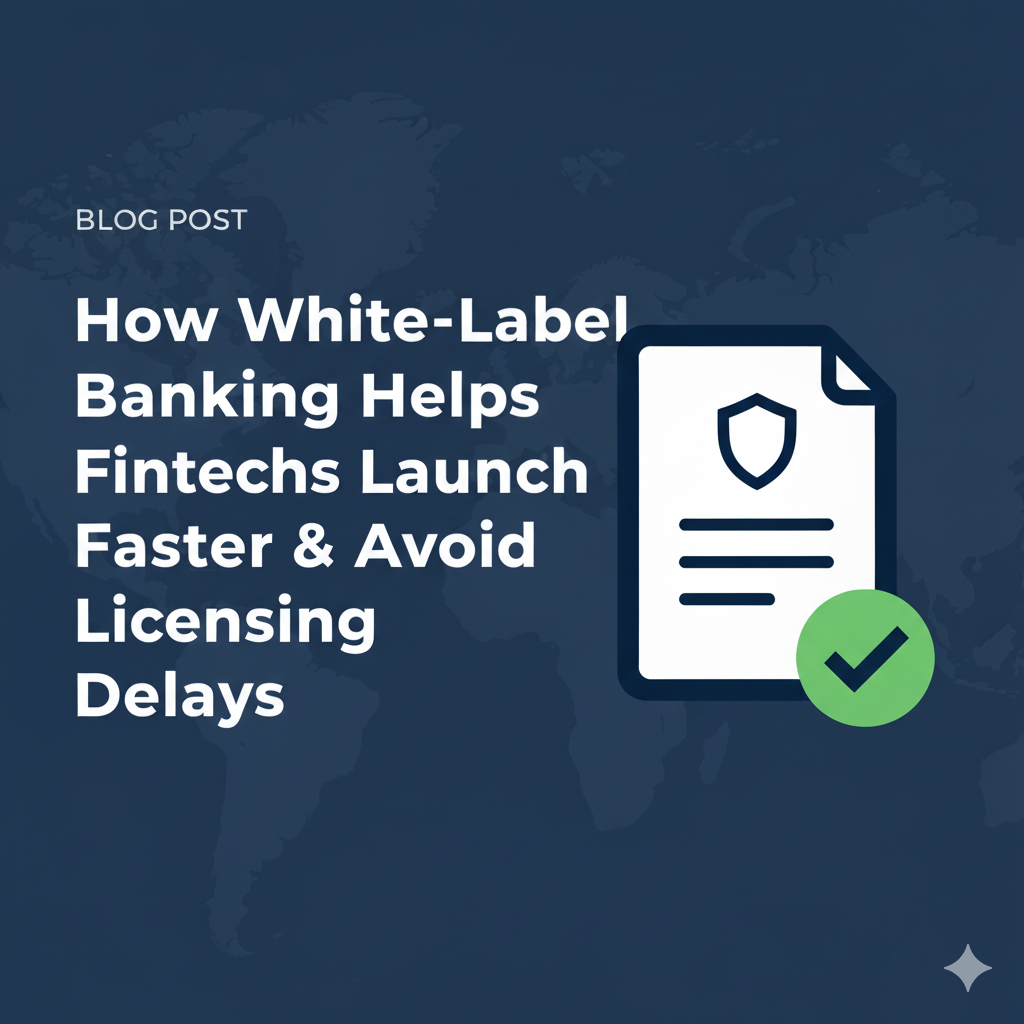How White-Label Banking Helps Fintechs Launch Faster & Avoid Licensing Delays
Introduction
In today’s fast-paced fintech landscape, speed is everything. Customers expect seamless digital banking, and investors want to see rapid go-to-market execution. But for startups, there’s one major roadblock: regulatory licensing.
Obtaining an Electronic Money Institution (EMI) license, Money Services Business (MSB) registration, or banking authorization can take anywhere from 6 months to several years, depending on the jurisdiction. These delays cost companies not only time but also missed opportunities.
That’s where white-label banking comes in. By leveraging a partner’s infrastructure and licenses, fintechs can launch in weeks instead of years — all while staying compliant.
At 7BaaS, we specialize in helping fintechs navigate this journey. Explore our White-Label Banking Services to accelerate your market entry.
What is White-Label Banking?
White-label banking is a partnership model where fintechs use the infrastructure, licensing, and compliance frameworks of an existing regulated entity.
Instead of applying for your own EMI or MSB license, you essentially “plug into” a provider who already has the regulatory approvals. You still control branding, customer experience, and product innovation — but the back-end compliance and licensing are handled by your partner.
Key Features of White-Label Banking:
-
Use of a regulated partner’s license
-
Access to payment rails (SEPA, SWIFT, ACH)
-
Built-in compliance (AML, KYC, reporting)
-
Customizable branding for your own customers
Common Licensing Delays Fintechs Face
Before exploring how white-label banking helps, let’s look at where fintech licensing gets stuck:
-
Regulatory Approval Times — FCA, FINTRAC, MAS, or EU regulators can take 12–18 months.
-
Capital Requirements — Holding €350,000+ for EMI or $100,000+ for MSB can freeze working capital.
-
Compliance Staffing — Hiring experienced compliance officers is both costly and competitive.
-
Bank Account Setups — Many banks refuse fintechs without proven track records.
-
Technology Testing & Audits — Regulators require advanced reporting, AML/KYC systems, and security protocols.
These delays often kill momentum for startups. That’s why many look at white-label options first.
How White-Label Banking Speeds Up Your Launch
1. Bypasses Licensing Delays
-
Instead of waiting 12–18 months, fintechs can go live in 6–12 weeks.
-
You operate under your partner’s license immediately.
2. Pre-Built Compliance Infrastructure
-
KYC/AML, reporting, and risk management are already in place.
-
Reduces the risk of failed audits or compliance fines.
Need compliance guidance? Check our Compliance & Regulatory Consulting Services.
3. Instant Access to Banking Networks
-
SEPA/ACH/SWIFT rails are pre-approved.
-
Eliminates the headache of building direct connections.
4. Reduced Capital Requirements
-
No need to freeze hundreds of thousands in regulatory capital.
-
More funds available for product, marketing, and customer growth.
5. Scalable Entry Strategy
-
Start small with white-label → later, transition to your own license.
-
This phased approach is popular with startups expanding into the UK, EU, or North America.
Cost vs. Control: What You Need to Know
White-label is not free from trade-offs.
-
Pros: Fast entry, lower upfront costs, ready compliance, and scalable.
-
Cons: Higher ongoing service fees, limited control over infrastructure, dependency on provider.
That’s why many fintechs start with white-label to validate their model, then apply for their own license once they reach scale.
Example: Timeline Comparison
| Step | Traditional EMI Application | White-Label Banking |
|---|---|---|
| Initial setup | 6–12 months | 2–8 weeks |
| Capital required | €350,000+ | Minimal upfront |
| Compliance team | Hire 3–5 staff | Provided by partner |
| Bank access | 3–6 months delay | Pre-approved |
| Market launch | 12–18 months | < 3 months |
Clearly, white-label banking can mean the difference between losing market share and gaining first-mover advantage.
Choosing the Right White-Label Partner
When selecting a white-label provider, check:
-
Licenses held (EMI, MSB, crypto, etc.)
-
Geographic coverage (UK, EU, Canada, Asia, Middle East)
-
Compliance support (AML/KYC, reporting, audits)
-
Banking partnerships (SEPA, SWIFT, Visa/MasterCard access)
-
Exit flexibility (Can you migrate later to your own license?)
At 7BaaS, we help fintechs evaluate providers, structure deals, and secure white-label solutions that fit their growth strategy.
FAQs
1. Is white-label banking legal?
Yes — as long as you operate through a regulated partner and follow compliance guidelines.
2. Can I switch later to my own EMI or MSB license?
Absolutely. Many fintechs use white-label as a stepping stone to full licensing.
3. What industries benefit most from white-label?
Payments, remittances, crypto, neobanks, and card issuers.
Conclusion
White-label banking is a game-changer for fintechs looking to launch quickly and avoid lengthy licensing delays. While it may not provide full control, it offers the fastest and most cost-efficient way to enter regulated markets.
Whether you want to start with white-label, acquire your own EMI/MSB license, or buy/sell licensed entities, 7BaaS provides the expertise, compliance support, and global marketplace to help you succeed.
Ready to launch faster? Book Your Free Consultation with our experts today.



